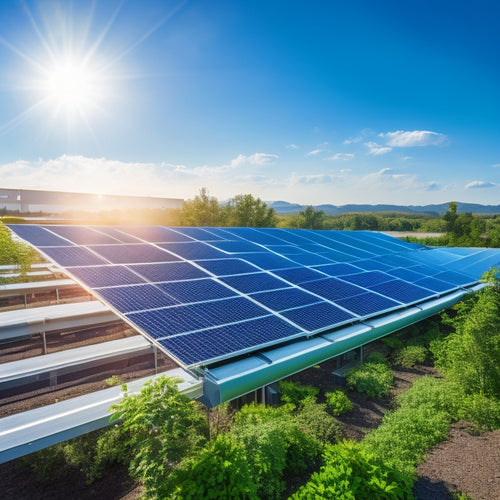Comfort and Sustainability: Choosing Eco-Friendly Socks for Everyday Wear
Share
You're likely no stranger to the comfort and performance of modern socks, but have you ever stopped to think about the environmental impact of your footwear choices? Eco-friendly socks made from recycled polyester, organic cotton, or plant-based materials like bamboo or hemp can reduce waste, conserve resources, and minimize environmental harm. Moisture-wicking fabrics and breathable mesh panels prioritize comfort and sustainability. By choosing eco-friendly socks, you're supporting a more sustainable future for the planet. As you explore the world of eco-socks, you'll discover even more innovative materials and production methods that cater to your comfort and values.
Key Takeaways
• Eco-friendly socks made from recycled polyester, organic cotton, or plant-based materials reduce waste and minimize environmental harm.
• Breathable fabrics and moisture-wicking properties prioritize comfort and sustainability in eco-friendly socks.
• Choosing eco-friendly socks supports sustainable fashion, reducing the environmental impact of the fashion industry.
• Natural fibers like bamboo and merino wool offer unparalleled breathability, temperature regulation, and antimicrobial properties.
• Recycling socks reduces waste, conserves resources, and decreases the environmental impact of sock production.
Understanding Eco-Friendly Sock Materials
When you slip on a pair of eco-friendly socks, you're likely to find they're made from innovative materials that not only feel good on your feet but also do good for the planet.
Fabric innovation has come a long way, and material science has played a significant role in developing sustainable textiles.
You might find socks made from recycled polyester, organic cotton, or even plant-based materials like bamboo or hemp.
These eco-friendly alternatives reduce waste, conserve resources, and minimize environmental harm.
As you explore the world of eco-friendly socks, you'll discover a range of innovative materials that prioritize both comfort and sustainability.
From moisture-wicking fabrics to breathable mesh panels, these socks are designed to keep your feet happy while also doing their part for the environment.
By choosing eco-friendly socks, you're supporting a more sustainable future for our planet.
The Impact of Synthetic Socks
You might be surprised to learn that the synthetic socks you've been wearing are contributing to the staggering 12.8% of global greenhouse gas emissions attributed to the fashion industry.
When you think about it, it makes sense - synthetic socks are made from petroleum-based materials that require a lot of energy to produce.
But that's not all - when you wash those synthetic socks, they release microplastics into our waterways, contributing to microplastic pollution.
And if that's not enough, synthetic socks often contain toxic chemicals like formaldehyde and heavy metals, which can leach into your skin and the environment.
These chemicals have been linked to serious health problems, including cancer and reproductive issues.
By choosing eco-friendly socks, you're not only reducing your carbon footprint but also protecting your health and the health of our planet.
It's time to rethink your sock game and opt for sustainable, eco-friendly alternatives that prioritize both people and the planet.
Benefits of Sustainable Sock Production
As you opt for sustainable sock production, you'll be contributing to a greener future.
You'll be reducing your carbon footprint, conserving water, and embracing eco-friendly materials that don't harm the planet.
Reduced Carbon Footprint
By switching to eco-friendly socks, you'll substantially decrease your carbon footprint, which is essential in today's fight against climate change.
The production process of traditional socks often involves a lengthy supply chain, resulting in significant greenhouse gas emissions.
In contrast, eco-friendly sock manufacturers prioritize sustainable practices, reducing their carbon footprint through carbon offsetting and environmentally responsible supply chain management.
When you choose eco-friendly socks, you're supporting a more environmentally conscious industry.
This, in turn, encourages manufacturers to continue investing in sustainable practices, creating a positive ripple effect throughout the industry.
Water Conservation Methods
Manufacturers of eco-friendly socks are implementing innovative water conservation methods, substantially reducing the environmental impact of their production processes.
As you consider switching to eco-friendly socks, you might wonder how they're making a difference.
Rainwater Harvesting: Collecting and storing rainwater for non-potable uses, such as washing machines and toilets, reduces the demand on municipal water supplies.
Greywater Systems: Implementing greywater systems, which reuse water from sinks and washing machines for irrigation and flushing toilets, minimizes wastewater generation.
Water-Efficient Equipment: Upgrading to water-efficient equipment and machinery reduces water consumption during the production process.
Water Recycling: Recycling water used in the production process minimizes wastewater generation and conserves this precious resource.
Eco-Friendly Materials Used
You're likely to find that eco-friendly socks are made from materials that not only feel great on your skin but also do the planet a whole lot of good, thanks to the innovative use of sustainable materials that reduce waste and minimize environmental harm.
These sustainable textiles are sourced from environmentally responsible suppliers, ensuring that the production process is as green as possible.
You'll often find eco-friendly socks made from materials like organic cotton, recycled polyester, and Tencel, which require less water and energy to produce.
Green manufacturing practices also play a vital role in reducing the environmental footprint of sock production.
By choosing eco-friendly socks, you're supporting brands that prioritize the health of our planet.
Not only will you be treating your feet to soft, comfortable socks, but you'll also be contributing to a more sustainable future.
Natural Fibers for Sock Construction
As you explore the world of eco-friendly socks, you'll likely come across two natural fibers that stand out for their exceptional properties: bamboo and merino wool.
You'll discover that bamboo is a game-changer when it comes to moisture-wicking and antibacterial properties, making it perfect for active lifestyles.
Meanwhile, merino wool offers unparalleled breathability and temperature regulation, making it an excellent choice for everyday wear.
Bamboo Benefits
Slipping into bamboo socks can be a game-changer for your feet and the planet, thanks to the remarkable benefits of this sustainable natural fiber.
Bamboo farming is an eco-friendly alternative to traditional cotton farming, requiring minimal water and pesticides. This innovative approach to textile production is a prime example of eco innovations in the industry.
Breathability: Bamboo fibers allow for airflow and moisture-wicking, keeping your feet dry and comfortable.
Softness: Bamboo socks are notoriously soft and gentle on your skin.
Durability: Bamboo fibers are incredibly strong and resistant to wear and tear.
Antimicrobial properties: Bamboo has natural antimicrobial properties that prevent odor-causing bacteria from growing.
Merino Wool Options
When it comes to natural fibers for sock construction, merino wool options are worth exploring, offering a unique combination of performance and sustainability that's hard to beat. You'll appreciate the benefits of merino wool, which boasts excellent moisture-wicking properties, temperature regulation, and natural antimicrobial properties. This means your feet will stay dry, cool, and fresh, even during intense activities.
Here's a breakdown of merino wool's impressive properties:
| Wool Property | Merino Benefit | You Benefit |
|---|---|---|
| Moisture-wicking | Draws sweat away from skin | Dry, blister-free feet |
| Temperature regulation | Keeps feet cool in summer, warm in winter | Comfortable feet year-round |
| Natural antimicrobial | Inhibits bacterial growth | Fresh, odor-free feet |
| Soft and breathable | Reduces blisters, discomfort | Happy feet all day |
| Sustainable sourcing | Supports eco-friendly practices | Clear conscience |
The Role of Recycling in Socks
By embracing recycling, you're not only reducing the staggering amount of waste generated by the fashion industry, but also paving the way for a more sustainable future in sock production.
Recycling plays a vital role in creating a closed-loop system, where old socks are collected, broken down, and reused to create new socks. This approach minimizes waste, conserves resources, and decreases the environmental impact of sock production.
Conservation of resources: Recycling socks reduces the need for virgin materials, preserving natural resources like water, energy, and land.
Waste reduction: Recycling helps divert socks from landfills, reducing the staggering 12.8% of global greenhouse gas emissions attributed to the fashion industry.
Lower carbon footprint: Recycling socks requires substantially less energy than producing new socks from raw materials.
Job creation: A thriving recycling industry can create new job opportunities in collection, sorting, and processing.
Certifications to Look for in Socks
When shopping for eco-friendly socks, you're not just looking for any old label - you want to make sure you're getting the real deal.
That's why you must verify that the manufacturer's claims are backed up by certifications.
GOTS Certification Matters
You're probably already familiar with the importance of eco-friendly fabrics, but did you know that the production process itself has a significant impact on the environment, which is where GOTS certification comes in.
One common misconception about GOTS is that it's only about organic cotton, but it's much more thorough than that. GOTS, or Global Organic Textile Standard, is a certification that guarantees the entire production process, from harvesting to manufacturing, meets rigorous environmental and social standards.
GOTS certification matters for several reasons:
Environmental responsibility: GOTS certified producers must implement sustainable practices that minimize waste, reduce water and energy consumption, and promote biodiversity to safeguard the environment.
Social accountability: GOTS guarantees fair labor practices, safe working conditions, and prohibits child labor and discrimination to protect workers' rights.
Transparency and traceability: GOTS certified products have a transparent supply chain, making it easier to track the origin of your socks.
Certification hierarchy: GOTS has a clear certification hierarchy, verifying that only products that meet the highest standards receive certification.
Oeko-Tex Standard Explained
As you explore eco-friendly socks, you'll likely come across the Oeko-Tex Standard label, a certification that guarantees your socks meet rigorous safety and environmental standards. This certification is vital, as it verifies that the socks you wear are free from harmful substances and meet strict chemical testing standards.
The Oeko-Tex Standard is a globally recognized certification that verifies the safety and sustainability of textiles. Here's what it covers:
| Aspect | Oeko-Tex Standard |
|---|---|
| Chemical Testing | Tests for over 300 harmful substances, including heavy metals, pesticides, and dyes |
| Safety | Confirms products meet safety standards for all ages, including babies and toddlers |
| Sustainability | Evaluates environmental impact, from raw material sourcing to production and distribution |
| Transparency | Provides traceability throughout the supply chain |
| Accountability | Regular audits and testing guarantee ongoing compliance |
Caring for Your Eco-Friendly Socks
By following a few simple care tips, your eco-friendly socks will stay fresh, retain their shape, and remain a staple in your sustainable wardrobe for a long time.
To keep your eco-friendly socks in top condition:
Hand washing: Gently wash your socks by hand in cold water using a mild detergent. Avoid using harsh chemicals or bleach, as they can damage the fabric.
Sock storage: Store your socks in a cool, dry place, away from direct sunlight. Folding or rolling them instead of bunching can help prevent creases and stretching.
Avoid using fabric softener or dryer sheets, as they can reduce the breathability of your eco-friendly socks.
Air dry your socks instead of machine drying to prevent shrinkage and damage to the fabric.
Stylish Options for Everyday Wear
From laid-back lounging to casual daily commutes, eco-friendly socks can elevate your everyday style with their vibrant colors, playful patterns, and sustainable materials.
You'll be delighted to know that these stylish options can become wardrobe essentials, adding a pop of personality to your outfits. When it comes to sock fashion, you can opt for bold stripes, subtle polka dots, or even quirky cartoon characters.
The best part? You'll be making a conscious choice to reduce your environmental footprint while still looking and feeling great.
As you build your eco-friendly sock collection, remember that they're not just for casual wear.
You can dress them up or down, pairing them with skirts, dresses, or trousers for a chic, put-together look.
Plus, many eco-friendly sock brands offer a range of styles to suit different tastes and preferences.
So, go ahead and experiment with different patterns, colors, and materials to find the perfect fit for your personal style.
With eco-friendly socks, you can stay true to your values while still looking and feeling amazing – it's a win-win!
Affordable Eco-Friendly Sock Brands
You'll be thrilled to discover that affordable eco-friendly sock brands are now more accessible than ever, offering high-quality, sustainable options that won't break the bank. Gone are the days of sacrificing style for sustainability or vice versa. Today, you can indulge in Sock Swag while staying true to your values.
Patagonia: Known for their environmentally responsible practices and fair labor standards, Patagonia offers a range of eco-friendly socks made from recycled materials.
People Tree: This fair trade and environmentally sustainable brand offers a vibrant collection of socks made from organic cotton and Tussar silk.
Thought: With a strong focus on Brand Ethics, Thought creates stylish, eco-friendly socks from sustainable materials like bamboo and organic cotton.
Hanes: This popular brand has introduced an eco-friendly line of socks made from recycled polyester and organic cotton, making sustainable fashion more accessible.
These brands are revolutionizing the sock game, offering stylish, affordable, and sustainable options that align with your values. Say goodbye to sacrificing style for sustainability – with these brands, you can have it all!
Making the Switch to Eco-Socks
Making the switch to eco-socks is a simple yet impactful way to reduce your daily environmental footprint. By choosing eco-friendly socks, you're not only doing your part for the planet, but you're also treating your feet to comfort and quality.
So, what's holding you back from making the switch?
For many of us, it's the personal motivators that drive us to make a change. Perhaps you're motivated by the desire to reduce waste, conserve resources, or promote sustainable practices.
Whatever your reason, recognizing your personal motivators can help you stay committed to your eco-friendly journey.
To form a habit of choosing eco-socks, start by replacing one or two pairs in your wardrobe with eco-friendly alternatives. As you get into the habit of opting for eco-socks, you'll find yourself becoming more mindful of your daily choices and their impact on the environment.
The Future of Sustainable Sock Design
As designers continue to push the boundaries of sustainable materials and production methods, the future of sock design is shaping up to be more eco-friendly than ever.
The industry is shifting towards a more sustainable future, and you'll be a part of it!
Smart Textiles: Imagine socks that can monitor your health and wellness, or even provide compression to improve circulation. It's not just about being eco-friendly, but also about innovative technology that benefits you.
Digital Printing: This game-changing technology allows for high-quality designs without the need for water or chemicals, reducing waste and pollution. You'll love the vibrant colors and unique designs that come with it!
Zero Waste: Designers are getting creative with materials, using recycled or upcycled materials to minimize waste. You'll feel good knowing your socks aren't only comfy but also sustainable.
Circular Business Models: Companies are moving towards a 'take-back' approach, where old socks are collected and recycled, reducing the need for new resources. It's a closed-loop system that benefits the planet!
The future of sustainable sock design is bright, and you're at the forefront of this eco-friendly revolution. By choosing eco-friendly socks, you're supporting a movement that's redefining the fashion industry.
Frequently Asked Questions
Can Eco-Friendly Socks Be Worn for Athletic Activities?
You can definitely wear eco-friendly socks for athletic activities, as they often feature advanced moisture management and sweat resistance, ensuring your feet stay dry and comfortable during intense workouts.
Do Eco-Friendly Socks Shrink More Than Synthetic Socks?
You'll be relieved to know that eco-friendly socks, made from natural fabric blends, shrink less than synthetic socks when you follow the washing instructions, ensuring a comfortable fit and reducing waste.
Are Eco-Friendly Socks More Prone to Odor Buildup?
You're wondering if eco-friendly socks are more prone to odor buildup? Not necessarily! Look for brands using moisture management technology and fabric treatment that inhibits bacterial growth, ensuring your feet stay fresh and odor-free all day.
Can I Wear Eco-Friendly Socks With Sandals or Flip-Flops?
You can definitely wear eco-friendly socks with sandals or flip-flops, especially during summer outings or beach fashion, as they'll keep your feet dry and comfortable while making a sustainable statement.
Do Eco-Friendly Socks Have a Shorter Lifespan Than Synthetic Socks?
You'll find that eco-friendly socks might not last as long as synthetic ones due to material tradeoffs, but if you wear them frequently, the wear frequency will help you determine their actual lifespan.
Related Posts
-

Solar Power Systems for Cost-Effective Sustainability
Investing in solar power systems is a smart move for cost-effective sustainability. You can save about $1,500 annuall...
-

Solar Inverter Troubleshooting for Beginners
Troubleshooting your solar inverter starts with understanding its efficiency and performance metrics. Check for prope...
-

Solar Energy Efficiency Improvements for Businesses
Improving solar energy efficiency for your business can lead to considerable cost savings and enhance your sustainabi...


